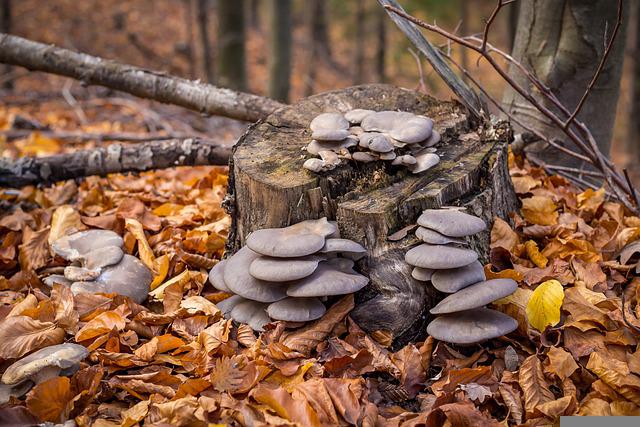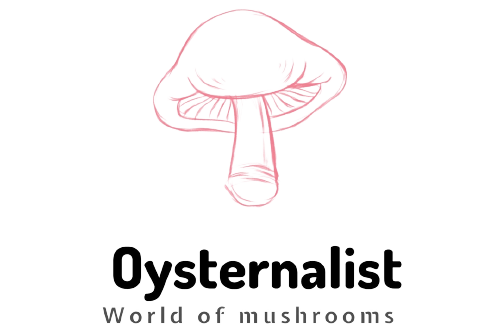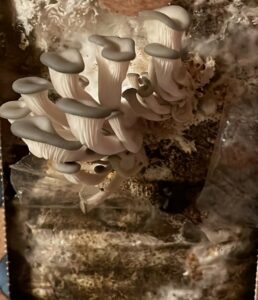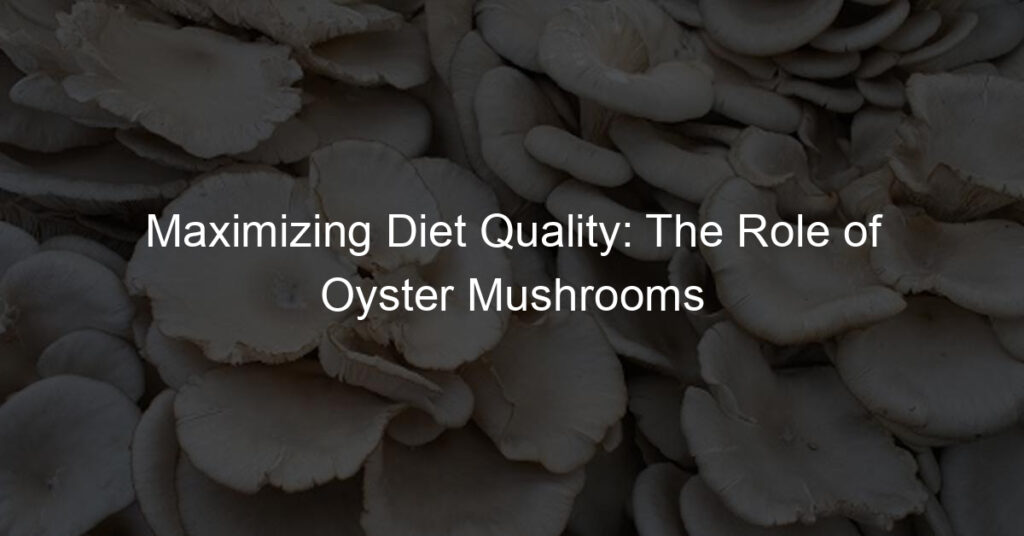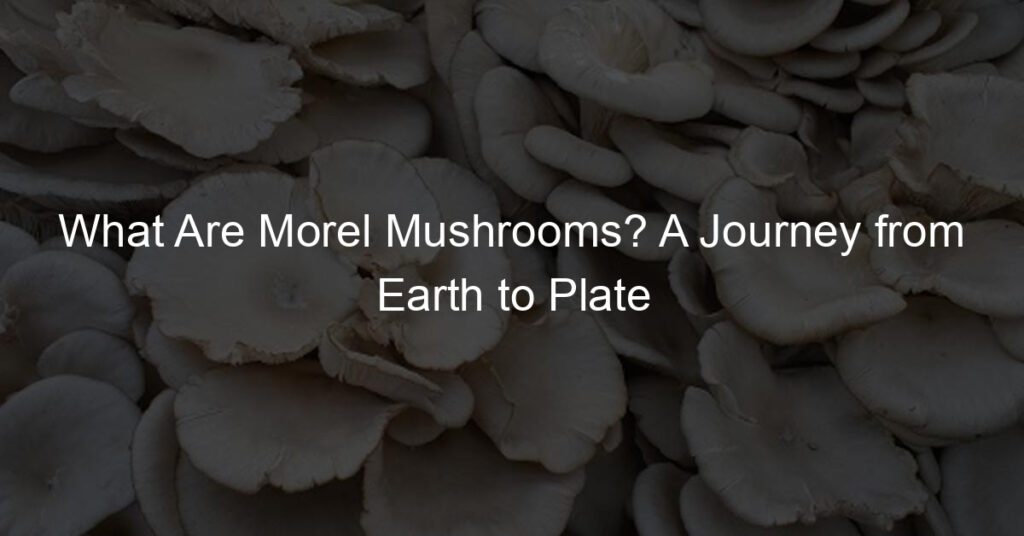You probably know them as blue oyster mushrooms, but sometimes they can be confused with pearl oyster mushrooms, tree oyster mushrooms, or Phoenix mushrooms, these fungi are culinary treasures with a long list of health benefits.
Like any other common oyster mushroom, Blue oyster mushrooms get their name from both their appearance and their habitat. These mushrooms have a powdery blue exterior and a soft fleshy interior. They grow in clusters on logs or trees, often near the coast.
These delicious mushrooms can be used in a variety of dishes. They have a mild flavor that is slightly sweet and nutty. Blue oyster mushrooms can be eaten raw, cooked, or pickled. They are a popular ingredient in stir-fries, soups, and sauces
Unlike any other oyster mushroom, blue oyster mushrooms are unique in both their color and taste.
What Are Blue Oyster Mushrooms?
Blue oyster mushrooms are edible mushrooms belonging to the genus Pleurotus and the Pleurotus ostreatus species. These mushrooms are native to East Asia and have been cultivated in that region for centuries. They are characterized by their blue-gray color and funnel-shaped cap. The flesh of these mushrooms is white and firm with a slightly nutty flavor. They are commonly used in stir-fries, soups, and stews.
Blue oyster mushrooms are a good source of protein, fiber, vitamins, and minerals. They also contain compounds that may boost your immune system and promote gut health. This makes These mushrooms an excellent addition to a healthy diet.
Where Do Blue Oyster Mushrooms Come From?
Blue oyster mushrooms are native to East Asia. They have been cultivated in that region for centuries. Today, They are also grown in North America, Europe, and Australia.
These mushrooms grow best in cool weather and prefer shady, moist conditions. Also, they can be grown on logs or other wood substrates. They can also be cultivated indoors on straw or sawdust.
If you want to find blue oyster mushrooms in the wild, look for them on dying hardwood trees. They typically grow in clusters and appear between late summer and early fall. Usually, you can locate these mushrooms in subtropical and temperate forests.
You may want to know more about the blue oyster mushroom price. Well, you may be surprised to learn that they are not as expensive as some other gourmet mushrooms. They are typically sold fresh or dried. You can also find them canned or frozen in some stores.
Are Blue Oyster Mushrooms Safe to Eat?
Yes, blue oyster mushrooms are safe to eat. These mushrooms are not toxic and do not contain any harmful compounds. These mushrooms are a healthy addition to your diet and can be eaten fresh or cooked.
If you are planning to eat these shrooms that you have collected from the wild, it is important to make sure that they have been properly identified. Some mushrooms can look similar to blue oyster mushrooms but may be poisonous. It is best to consult with an expert before consuming any wild mushroom.
Can You Dehydrate Blue Oyster Mushrooms?
Yes, you can dehydrate blue oyster mushrooms. Dehydrating is a great way to preserve these mushrooms for later use. To dehydrate These mushrooms, slice them thinly and place them on a drying rack or dehydrator tray.
Set the dehydrator to 115 degrees Fahrenheit and dry the mushrooms until they are crisp. Store the dried oyster mushrooms in an airtight container in a cool, dark place.
Generally, dried mushrooms will last for up to a year. However, they may lose some of their flavor and nutritional value over time.
How to Start Growing Blue Oyster Mushrooms?
Before you start Growing your own blue oyster mushrooms, you will need to purchase a blue oyster spawn or start a culture. This can be done online or at your local gardening store. Once you have your blue oyster mushroom spawn or culture, prepare an indoor growing area or find an outdoor location that receives partial shade.
Since blue oyster mushrooms grow best in cool weather, you will need to provide them with the proper temperature and humidity. The ideal temperature for blue oyster mushrooms is between 60-70 degrees Fahrenheit. You can maintain the proper humidity level by misting the mushrooms with water or using a humidifier.
Logs or wood chips are the best substrates for these mushrooms. Although they can be grown on logs, they can also grow on coffee grounds or sugar cane. But if you are going for the option of logs, know that the logs should be cut to size and soaked in water overnight.
The wood chips should be placed in a plastic bag with holes punched in it and soaked in water for 24 hours.
Once the substrate is ready, mix it with the spawn or culture. inoculate logs by drilling 3/8 inch deep holes every 10 inches and filling them with the spawn mixture. For wood chips, place them in a plastic bag with the spawn mixture and shake them until the chips are evenly coated.
The blue Oyster Mushroom mycelium will start to colonize the substrate within a few days. Keep the substrate moist but not waterlogged during this time. Once the mycelium has colonized the substrate, it will produce mushrooms.
Pay close attention to the level of fresh air exchange and humidity in the growing area. These mushrooms need fresh air to fruit but too much dry air will cause them to dry out. Use a fan to circulate the air and mist the mushrooms with water as needed to maintain the proper humidity level.
Place the inoculated logs or bags of wood chips in a shady location and keep them moist. They will begin to fruit within 4-8 weeks. Harvest the mushrooms when they are big enough to eat. After harvesting, you can place the logs or bags in a new location to fruit again.
If you are still considering it, you can relax and go for it. Even if you are inexperienced, you can quickly grow blue oyster mushrooms at home.
Nowadays it is easy than ever to purchase a blue oyster mushroom kit (there are also kits for pink oysters, pearl oysters, and yellow too!) or spawn online or at your local gardening store. These kits often wrap everything you need to start growing mushrooms.
With a little patience and effort, you can be on the way to growing and eating your very own blue oysters.
When Are Blue Oyster Mushrooms Ready to Harvest?
Blue oyster mushrooms are ready to harvest 4-8 weeks after they have been inoculated. The mushrooms should be big enough to eat. After harvesting, you can place the logs or bags in a new location to fruit again.
How to Harvest Blue Oyster Mushrooms?
When harvesting blue oyster shrooms, be sure not to damage the surrounding mushrooms or the substrate. Cut them at the base of the stem, being careful not to damage the mycelium. You will need to sterilize your knife before and after each cut to prevent the spread of disease.
Do your best to harvest clusters of mushrooms rather than individual mushrooms to minimize the impact on future crops. Also, in terms of storing your blue oysters, clusters will last longer.
Once the mushrooms have been harvested, they can be eaten fresh or cooked. They can also be dried for later use.
What Does a Blue Oyster Mushroom Taste Like?
Blue oyster mushrooms taste has a slightly nutty flavor. The flesh of these mushrooms is white and firm. They can be eaten fresh or cooked. Their meaty texture makes them a good choice for many dishes or as a side dish.
They are commonly used in stir-fries, soups, and stews, and it’s easy to find a simple blue oyster mushroom recipe with just a few ingredients.
What Are the Benefits of Blue Oyster Mushrooms?
Blue oyster mushrooms are a good source of protein, fiber, vitamins, and minerals. They also contain compounds that may boost your immune system and promote gut health. This makes them an excellent addition to a healthy diet.
Protein: One cup of cooked blue oysters provides 6 grams of protein. This is about the same amount of protein found in one egg.
Fiber: The Blue oyster mushroom is a good source of fiber. One cup of cooked mushrooms provides 2 grams of fiber. Fiber is important for digestive health.
Vitamins and minerals: These mushrooms are a good source of several vitamins and minerals, including vitamin C, potassium, and selenium.
Immune system support: These mushrooms contain compounds that may boost your immune system. These mushrooms are a good source of beta-glucans, which are known to stimulate the immune system.
Gut health: The compounds in a blue oyster mushroom may promote gut health. Blue oyster mushrooms are a good source of chitin, which is a type of fiber that helps keep the digestive system healthy.
Additionally, blue oyster mushrooms contain antioxidants that can help protect the gut from damage.
If you want to enjoy the blue oyster mushroom benefits, Whether they are raw, cooked, or dried, you can add them to your diet in many ways.
How Can You Add Blue Oyster Mushrooms to Your Diet?
Blue oyster mushrooms can be eaten fresh or cooked. They are commonly used in stir-fries, soups, and stews. You can also add them to salads, pizza, pasta, grain bowls, and wraps.
When buying these mushrooms, look for mushrooms that are firm with a smooth surface. Avoid mushrooms that are slimy or have brown spots.
Blue oyster mushrooms are a versatile ingredient that can be used in various dishes. Whether you’re looking for a healthy addition to your diet or a delicious way to add more vegetables to your meals, these mushrooms are a great option.
Are There Any Potential Side Effects of Consuming Blue Oyster Mushrooms?
There are no known side effects of consuming blue oyster mushrooms. However, if you are allergic to other types of mushrooms, you may also be allergic to these mushrooms.
If you experience any adverse reactions after consuming these mushrooms, it’s best to avoid them in the future.
Additionally, some people may experience digestive issues after eating oyster mushrooms (or any other mushrooms).
If this happens, eat them in small quantities or cook them before consuming them.
How Should You Store Blue Oyster Mushrooms?
Oyster mushrooms may be kept in the refrigerator for up to a week. To keep them, wrap them in paper or store them in a container with holes for fresh air and for them to breath. This will allow them to breathe and stay fresh for longer.
You can also store these mushrooms in the freezer for up to six months. To do this, cook them first by sautéing, grilling, or roasting. Then, let them cool completely before storing them in a freezer-safe bag or container.
If you bought blue oyster mushrooms from a store, remember that after removing the plastic wrap, they should be eaten within a few days.
Are There Any Interesting Facts About the Blue Oyster Mushroom?
- These mushrooms are not blue – they get their name from their bluish-greyish hue.
- These mushrooms are native to North America, but they can now be found all over the world.
- Some people believe that a blue oyster mushroom can boost the immune system and help fight off infections.
- These mushrooms can be enjoyed cooked or raw – they’re often used as a replacement for meat in vegetarian dishes.
- Blue oyster mushrooms are low in calories and fat, making them a healthy addition to any diet.
- Blue oyster mushrooms are easy to grow at home and can be cultivated on just about any type of wood substrate.
Whether you’re a fan of fungi or not, there’s no denying that blue oyster mushrooms are pretty darn cool!
